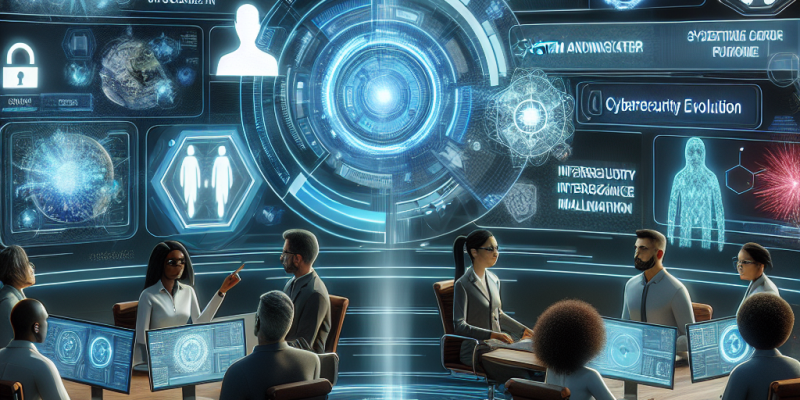From Incident Response to Proactive Defense: The Changing Role of Cybersecurity Teams in 2025

From Incident Response to Proactive Defense: The Changing Role of Cybersecurity Teams in 2025
As we step into 2025, the landscape of cybersecurity is changing rapidly. Traditionally, cybersecurity teams focused mainly on responding to incidents after they occurred. However, with the rise of advanced threats and cyberattacks, their role is evolving towards a more proactive defense strategy. This shift is essential to protect sensitive information and maintain the integrity of digital infrastructures.
The New Challenges
Cyber threats are becoming more sophisticated every year. Hackers are using artificial intelligence (AI) to create attacks that are harder to detect. Ransomware, phishing, and data breaches are still major concerns, but now they come with new twists. For instance, attackers can now automate their strategies, making them faster and more efficient. This rapid evolution means that cybersecurity teams need to stay ahead to effectively safeguard their organizations.
Proactive Defense Strategies
In 2025, cybersecurity teams are embracing a proactive approach to defense. This means they are not just waiting for an attack to happen; they are actively searching for vulnerabilities in their systems. Here are some key strategies they are adopting:
-
Continuous Monitoring: Teams are implementing advanced monitoring tools that provide real-time insights into their networks. This allows them to detect unusual activities before they turn into serious threats.
-
Threat Intelligence Sharing: Collaboration is becoming crucial. Cybersecurity teams are sharing information about threats with each other. This helps them learn from past incidents and prepare for potential future attacks.
-
Employee Training: Human error is often a weak link in cybersecurity. Organizations are investing more in training their employees. Regular workshops and simulations enhance awareness and build a culture of security.
-
Automated Response Systems: Teams are beginning to use AI and machine learning to respond to threats automatically. These technologies can quickly assess and neutralize threats, reducing response times significantly.
-
Risk Assessment and Management: Regularly analyzing risks helps teams identify their vulnerabilities. By understanding where their weaknesses lie, they can strengthen their defenses and focus on the most critical areas.
The Role of Technology
In 2025, technology plays a central role in transforming cybersecurity practices. Advanced tools, such as AI-driven analytics and cloud security solutions, are revolutionizing how teams protect their assets. These technologies not only enhance detection capabilities but also aid in predicting potential attacks.
Building a Security Culture
A strong security culture within an organization is vital. Cybersecurity is not just the responsibility of IT; it needs to involve everyone. From top management to entry-level employees, everyone must understand their role in maintaining security. Encouraging open communication about risks and security measures helps build a collective defense.
Conclusion
As we look at the evolving role of cybersecurity teams in 2025, it’s clear that being reactive is no longer enough. The shift toward proactive defense is vital to combat the growing wave of cyber threats. By adopting continuous monitoring, sharing intelligence, and fostering a culture of security, organizations can better protect themselves.
In this new landscape, teamwork, technology, and training will be the cornerstones of effective cybersecurity, keeping sensitive data and systems safe in a world that is constantly changing. The future of cybersecurity is bright, and proactive defense will lead the way.














